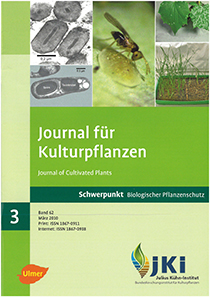Refining the implementation of arthropod classical biological control
DOI:
https://doi.org/10.5073/JfK.2010.03.10Keywords:
Host range, risk assessment, leek moth, agent selectionAbstract
The last few decades have been turbulent for the reputation and practice of arthropod classical biological control. Public and scientific support for this pest management approach has risen, fallen and appears to be rising again. Due to reports in the 1980s and 1990s of negative environmental effects caused by classical biological control agents, practitioners have scrambled to develop better risk assessment measures. Since the mid-1990s, several national and international guidelines have been created that assign responsibilities to the players involved in selection and release of exotic beneficial insects. At the same time and on a more technical level, researchers have been working to develop standardised procedures for the risk assessment of proposed classical biological control agents. The lack of well-established protocols (like those that exist for weed biological control) has been a great impediment to the implementation of meaningful risk assessments. Along with other research groups, the biological control scientists at CABI Europe-Switzerland are using current projects to tackle problems associated with estimating agent host specificity and risk assessment. In particular, the arthropod classical biological control team is working on key host range testing issues including methods for selection of non-target species, design and implementation of host specificity experiments, and extrapolation of laboratory results to a field context.
Published
Issue
Section
License
The content of the journal is licensed under the Creative Commons Attribution 4.0 License. Any user is free to share and adapt (remix, transform, build upon) the content as long as the original publication is attributed (authors, title, year, journal, issue, pages).
The copyright of the published work remains with the authors. The authors grant the Journal of Cultivated Plants, the Julius Kühn-Institut and the OpenAgrar repository the non-exclusive right to distribute and exploit the work.







